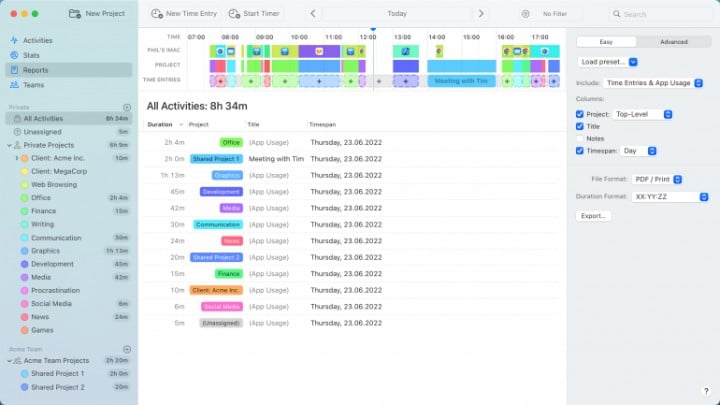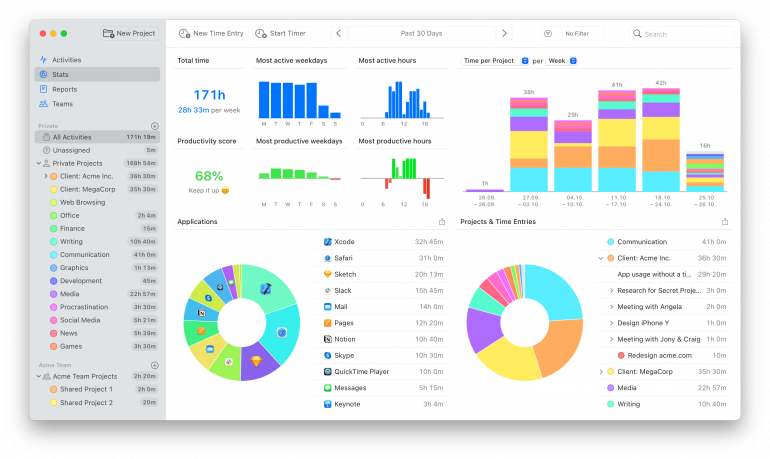Time Constraints: 8 Pro Tips to Help You Manage Tight Deadlines

Image: Antoni Shkraba
Our professional lives are governed by one time constraint after another. Client and self-imposed deadlines, access to resources, and our operational processes influence what we prioritize when. This isn’t necessarily a bad thing. It’s an inevitability. Every task has to be completed at some point. And if we can plan our schedules realistically and manage our workloads effectively, we can leverage these limitations properly,
Here, we offer eight useful strategies to help you navigate demanding deadlines. Their intention is to reduce the potential negative effects of time constraints, such as stress, decreasing work quality, and an inability to think creatively. And instead ensure you structure your time in a way that helps you feel in control, focused and productive.
Table of Contents
What is a Time Constraint?
A time constraint is anything that limits the time you have available to work on a task or project. Time constraints are an unavoidable part of any professional activity and can stem from your clients’ demands, your own project schedules, or your personal or work goals.
Understanding and effectively managing your time constraints is important if you want to work productively. If the constraints you’re working under are reasonable, you should be able to plan, organize and execute your tasks efficiently and successfully.
But if your time constraints are unrealistic or poorly managed, they’re likely to negatively affect your work satisfaction, the quality of your work, and your work-life balance. Coming up against an endless series of time constraints is exhausting and stressful, and can quickly lead to burnout. And it can limit your ability to think strategically and creatively.
Managing your time constraints well goes hand in hand with setting and maintaining strong work boundaries. There’s only so much you can accomplish in any given time period. And being honest with yourself, your team, and your clients about these limitations can help you deliver good-quality work within realistic timeframes, without compromising your physical or mental health.
What Are Some of the Common Types of Time Constraints?
Let’s take a look at the three common types of time constraints you’re likely to experience in your work.
Deadlines
Deadlines are inevitable. Every project has a point in time when it needs to be completed or delivered. These deadlines can be set by clients: “I’d like my new website to be live by the end of the quarter.” Or they can be set internally: “If we’re going to get the website live by the end of the quarter, we need to have the copy ready within the first six weeks.”
To meet your deadlines, you need to have precise time management processes in place. Consistently using an automatic time tracking solution (like Timing!) can help you to see how long a similar project took you to complete in the past. By generating a report through Timing’s built-in presents, or customizing it to your needs, you can draw up data based on a particular project or a particular client. Use this to inform the deadlines you propose to your clients.

Remember, if your suggested deadline is different to what your client requests, it’s worth having a constructive discussion about what’s feasible and fair. Try to avoid commiting to a deadline you suspect you can’t meet. Your business’s reputation and success will suffer if you fail to meet your commitments. Rather be realistic.
Resources
Every project is limited by the resources you have at your disposal at any given time. These might be human, financial, technological or physical resources.
The skills, experience and availability of your team significantly influence the time it takes to complete a task. A well-coordinated, high-functioning group of people can dramatically reduce the pressure of tight deadlines.
Adequate funding is also important. Without sufficient budget in place, you might find that you can’t afford the right people or tools to complete a project in time.
Hardware, software, equipment and workspace matter, too. Outdated technology and delays in acquiring the physical resources necessary to complete a job can lead to missed deadlines and extended time frames.
Operational Processes
How your business operates can dramatically affect how quickly and efficiently you’re able to complete your tasks. In particular, having effective internal communication methods in place can help you align the team around a common goal and ensure that everyone is on the same page.
Streamlined and well-defined processes fuel quick decision-making, reduce redundancies, and help teams collaborate better. The right tools and productivity apps can help you automate redundant tasks and focus on the billable work that matters. Inefficient or cumbersome processes, on the other hand, can create bottlenecks, cause delays, and increase the risk of errors.
The Psychological and Productivity Effects of Time Constraints
As we’ve already established, time constraints are essential to how we work. But they can affect your mental health and productivity in both positive and negative ways, depending on how carefully you manage your time.
If you manage your time well by using a time management technique that works for you, time constraints can help to:
- Prioritize tasks effectively: Being realistic about how much time you need to complete your tasks can help you to order them well.
- Enhance focus and motivation: Understanding your priorities and working to a schedule can boost your focus and motivation.
- Work efficiently: As you successfully tick off your tasks, you’re less likely to see your deadlines snowball. This can help you work efficiently on a long-term basis.
However, if you don’t manage your time well, and you constantly feel like you’re running into one time constraint after another, you’re likely to experience:
- Increased stress and anxiety: Consistently working under tight deadlines can make you feel stressed, anxious and burnt out.
- Decreased quality of work: It’s difficult to produce high-quality outputs when you’re rushing, cutting corners, and worrying about the next deadline.
- Innovation suppression: Continuous pressure to deliver on tight schedules can limit your ability to be creative and innovative. With less time to develop new approaches, you’re likely to rely on old, outdated ideas that don’t represent your best work.
The trick is to use time constraints to your advantage. Be in control of your deadlines, rather than let them control you. An effective time management tool that tells you exactly how you spend your time, helps you identify and limit distractions, is an essential part of this process. It’s one of the eight tips we outline below.
8 Pro Tips for Working under Tight Deadlines
Time constraint in sight? No problem! Here’s how to manage your time well, even in the face of tight deadlines.
1. Prioritize Your Tasks
This is an important first step. Take a moment to identify the most critical and time-sensitive tasks on your to-do list. Try using the Eisenhower Matrix. This technique helps you rank tasks according to their urgency and importance, separating time-sensitive and financially valuable tasks from those that can wait until later or be delegated.
Focusing on your high-priority tasks first ensures that essential work is completed on time, reducing delays and panic down the line.
2. Break Your Work Into Manageable Chunks
Dividing your work into small and manageable chunks is a powerful strategy for handling tight deadlines. It allows you to focus on each component individually, which reduces the risk of feeling overwhelmed by the scale of the broader project.
If you’re addressing bite-size pieces of work, you’re also more likely to celebrate your progress along the way, which can help you stay motivated. And it’s easier to course correct if your circumstances change.
3. Plan Effectively
Especially when we’re feeling stressed, we often think we can achieve mammoth tasks in virtually no time at all. This is rarely, if ever, attainable.
Planning effectively — and realistically — is essential. Start by outlining a clear roadmap for your project. You might want to reverse engineer this, working backwards from your deadline, detailing each step and setting feasible milestones.
Allocate your time and resources wisely, consider potential obstacles, and give yourself some flexibility to handle unexpected issues. Extra wiggle room will help you maintain your sanity even as the next deadline approaches.
4. Leverage Technology
Use time tracking and project management tools to gain insights into how much time tasks actually take and where your inefficiencies lie. Are you considering all the ways in which you work, including time spent on your tablet and phone? Are you getting caught up in time sinks that are robbing you of working hours? And how efficiently are your teams working?
By running in the background while you work, Timing offers detailed insight into how you spend your hours and minutes every day. The Activities page provides a snapshot of this data, indicating what you work on, how long it takes you, and even what time of the day and week you’re most productive.
Integrate this information into your planning, and you’re more likely to meet your deadlines.

Because Timing runs automatically, you also don’t have to worry about starting or stopping a timer. This saves hours of manual effort over time. And with its rules feature, Timing categorizes every task according to the right client or projects, too.
These interventions help to improve the operational processes we mentioned above. By using tools that make your working life quick, simple and seamless, you can focus on the work that really matters.
5. Avoid Multitasking
When we’re busy, it’s all too easy to context switch between tasks. Jumping from one to another almost unthinkingly as we try to get everything done.
Studies have shown that an overwhelming majority of people (more than 97%) perform tasks worse if they try to do more than one at a time. Focus on one task instead, and you’re likely to do it both better and quicker. If you’ve got the added pressure of a tight deadline, it’s even more important to devote your attention to the task at hand. Multitasking scatters your focus, increases the chance of errors, and ultimately slows your progress.
6. Stay Organized
A cluttered, busy physical and digital workspace can distract you and negatively affect your ability to work efficiently. If you find it difficult to locate essential information, you’re likely to disrupt your workflow and limit your ability to meet your deadlines.
Plan ahead if you know you’re entering a busy period by getting all the information you need ready.
7. Communicate Clearly
Communication is always important, but even more so when you’re working under tight time constraints. During these periods, clear communication helps prevent misunderstandings, keeps everyone on the same page, and reduces the need for work to be redone. This helps you make adjustments quickly and easily, and fosters a supportive and collaborative working environment.
Make sure you’re using the right communication tools to help you. Smart and intuitive solutions that have your teams’ buy-in will help you work both synchronously or asynchronously.
8. Practice Self-Care
When deadlines are coming thick and fast, self-care is typically one of the first things to go out the window. But if you’re conscious of what your body and mind need, you’ll likely find that you have the energy to focus and work more productively. Neglecting your physical and mental needs is a one-way ticket to burnout.
Self-care can take many forms. Taking regular work breaks, maintaining a healthy diet, exercising, and getting enough sleep are all valuable. But you might also want to meditate or practice mindfulness, or seek out a work-life balance by spending your time well.

Image: Andrea Piacquadio
In Summary
Time constraints are a natural part of how we manage our time. They’re the deadlines and commitments that structure what we work on when. If we manage these constraints well, they can help us organize our time in ways that put our health, happiness and productivity first. If we let our time constraints control us, however, we’re likely to feel stressed, burnt out and exhausted.
Working to tight deadlines well involves prioritizing your tasks, breaking them up into manageable pieces, planning effectively, leveraging technology, avoiding multitasking, staying organized, communicating clearly, and practicing self-care.
One of the easiest tips to implement is to leverage technology. Start by downloading Timing’s free 30-day trial so that you can track exactly how you spend your time. With this information, you can ensure that you get the most out of every workday and that you consistently meet your goals and deadlines.
Time Constraint: Frequently Asked Questions
What Are Time Constraints?
A time constraint is anything that limits the time available to work on a task or project. Deadlines, resources and operational processes are the most common time constraints you’re likely to encounter. They can stem from your clients’ demands, your own internal project schedules, or your personal or work goals.
How Do You Manage Time Constraints on a Project?
Firstly, assess how long a project is likely to take you by reviewing your previous Timing reports. Then, plot the process backwards from this deadline, establishing realistic milestones for you to achieve along the way. Chat to your client about your proposed time frame, making sure it aligns with their expectations.
What Is The Impact of a Time Constraint on Quality of Work?
If you manage your time well, a time constraint can help you identify your priorities, and enhance your focus and productivity. But if your scheduling is cluttered and chaotic, time constraints can make you feel stressed and anxious, and decrease the quality of your work. Manage your time realistically so that you’re in control of your time constraints, rather than the other way round.
What Are Some Tools and Techniques to Handle Time Constraints?
An automatic time tracking tool can give you insights into how much time tasks actually take and where your inefficiencies lie. Integrate this information into your planning, and you’re more likely to meet your deadlines.
